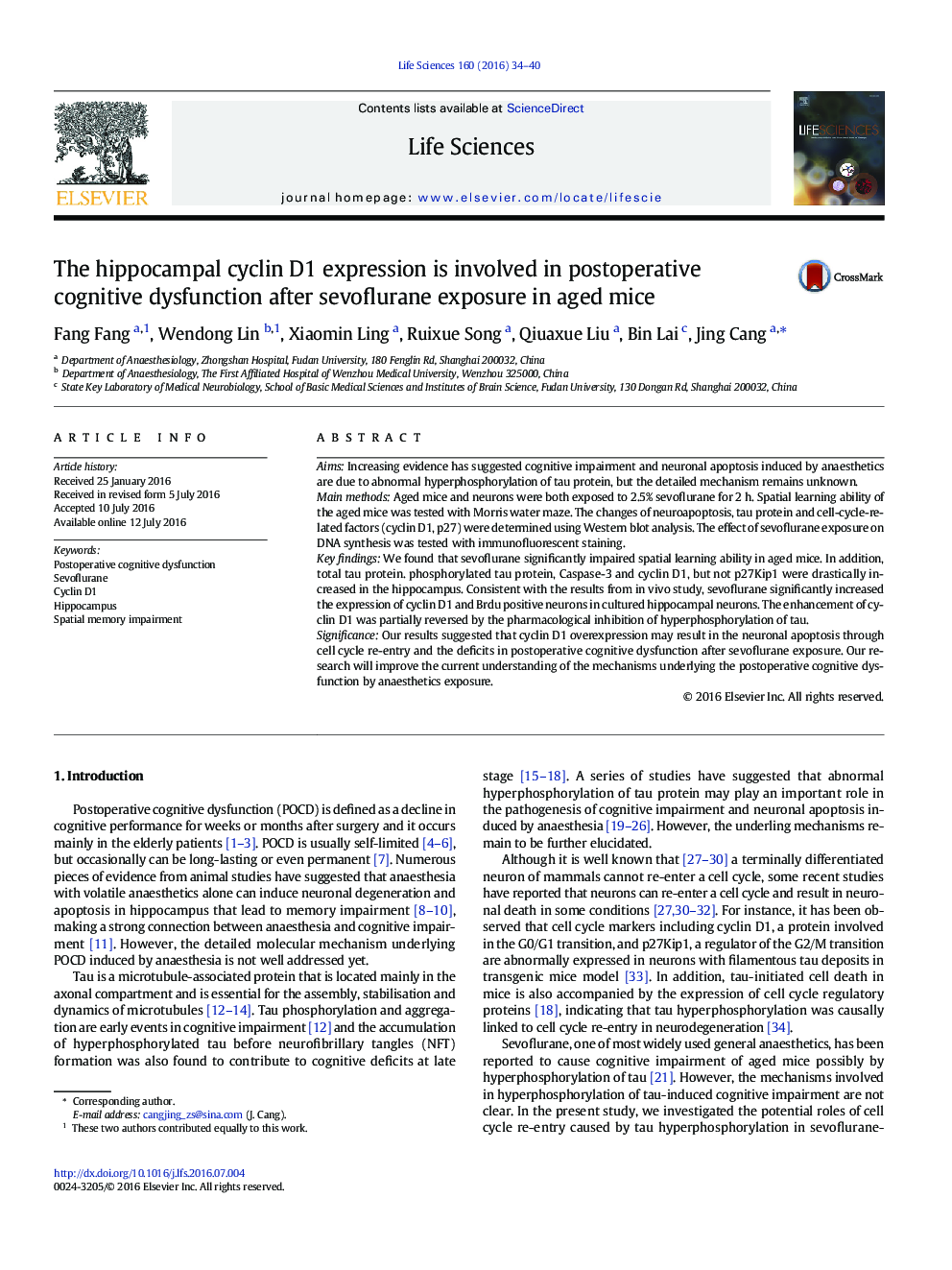| Article ID | Journal | Published Year | Pages | File Type |
|---|---|---|---|---|
| 2550390 | Life Sciences | 2016 | 7 Pages |
AimsIncreasing evidence has suggested cognitive impairment and neuronal apoptosis induced by anaesthetics are due to abnormal hyperphosphorylation of tau protein, but the detailed mechanism remains unknown.Main methodsAged mice and neurons were both exposed to 2.5% sevoflurane for 2 h. Spatial learning ability of the aged mice was tested with Morris water maze. The changes of neuroapoptosis, tau protein and cell-cycle-related factors (cyclin D1, p27) were determined using Western blot analysis. The effect of sevoflurane exposure on DNA synthesis was tested with immunofluorescent staining.Key findingsWe found that sevoflurane significantly impaired spatial learning ability in aged mice. In addition, total tau protein. phosphorylated tau protein, Caspase-3 and cyclin D1, but not p27Kip1 were drastically increased in the hippocampus. Consistent with the results from in vivo study, sevoflurane significantly increased the expression of cyclin D1 and Brdu positive neurons in cultured hippocampal neurons. The enhancement of cyclin D1 was partially reversed by the pharmacological inhibition of hyperphosphorylation of tau.SignificanceOur results suggested that cyclin D1 overexpression may result in the neuronal apoptosis through cell cycle re-entry and the deficits in postoperative cognitive dysfunction after sevoflurane exposure. Our research will improve the current understanding of the mechanisms underlying the postoperative cognitive dysfunction by anaesthetics exposure.
